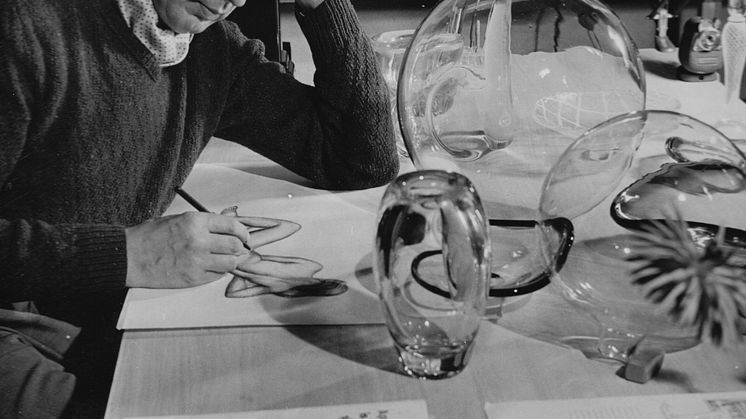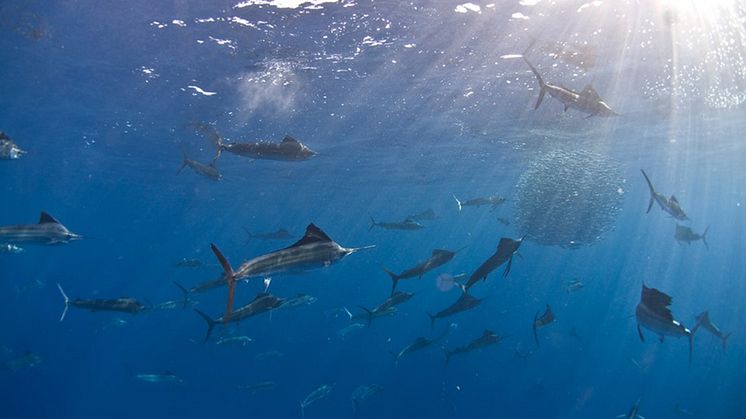Watching how plants make oxygen
In a new study, an international team of researchers made significant progress in visualizing the process how plants split water to produce oxygen. The results are published in Nature.
In a new study, an international team of researchers made significant progress in visualizing the process how plants split water to produce oxygen. The results are published in Nature.
In a newly published study in The Sociological Review, researchers from Uppsala University and Stockholm University have explored how everyday domestic cooking is part of a self-understanding of men in Sweden and how the expressed sociality of cooking is intertwined with masculinity.
Australian design historian Mark Ian Jones launches his new book Vicke Lindstrand On The Periphery- the first English language publication to examine the life and work of the Swedish artist and his place in Scandinavian design history. The author describes the image and reception of an artist and designer who didn’t “fit the mould” but has shown to be more influential than previously perceived.

Children that are diagnosed with the severe the brain tumour malignant glioma often have a very poor prognosis. New findings from Uppsala University show that in mice glioma development and glioma cell properties are affected by both age and the cell type from which the tumour has arisen. The tumour cell of origin was also important for the susceptibility of the tumour cells towards cancer drugs.
The mesoporous magnesium carbonate Upsalite® is shown to inhibit growth of Staphylococcus epidermidis, bacteria associated with acne and hospital acquired infections. That is the result of a study published in ACS Omega, by researchers at Uppsala University. The results open up for development of materials inhibiting bacterial growth without the use of antibiotics for e.g. dermal applications.
Cooperating sailfish catch more fish per time than if they hunt individually, a new study from Uppsala University, published in the scientific journal Proceedings of the Royal Society B has shown.

Of the many ecological questions unfolded by climate change, the potential influence of temperature on the feeding preferences of organisms is currently gathering a great deal of attention in the scientific community. In a new study, published in the journal Ecology, researchers show that three species of tadpoles generally increased herbivory under simulated heat wave scenarios.
Since the 18th century, geologists have struggled to explain how big magma chambers form in the Earth’s crust. In particular, it has been difficult to explain where the surrounding rock goes when the magma intrudes. Now a team of researchers from Uppsala University and the Goethe University in Frankfurt have found the missing rocks – and they look nothing like what they expected.
12 specific areas of the DNA sequence are robustly related with the age at which we have our first child, and how many children we'll have during our life. That's the conclusion of a paper published in Nature Genetics today. The study is led by the University of Oxford, University of Groningen, and Uppsala University. It includes analysisis for almost 330,000 people.
Understanding how cells within tumors respond to drugs is a critical issue in anticancer drug development. In an article published in Cell Chemical Biology researchers from Uppsala University report a new approach to study cancer cells’ reactions to treatments and present how it can be used to find new promising drug combinations.
Results from a new clinical study conducted at Uppsala University suggest that curtailing sleep alters the abundance of bacterial gut species that have previously been linked to compromised human metabolic health. The new article is published in the journal Molecular Metabolism.
Where did our jaws come from? The question is more complicated than it seems, because not all jaws are the same. In a new article, published in Science, palaeontologists from China and Sweden trace our jaws back to the extinct placoderms, armoured prehistoric fish that lived over 400 million years ago.